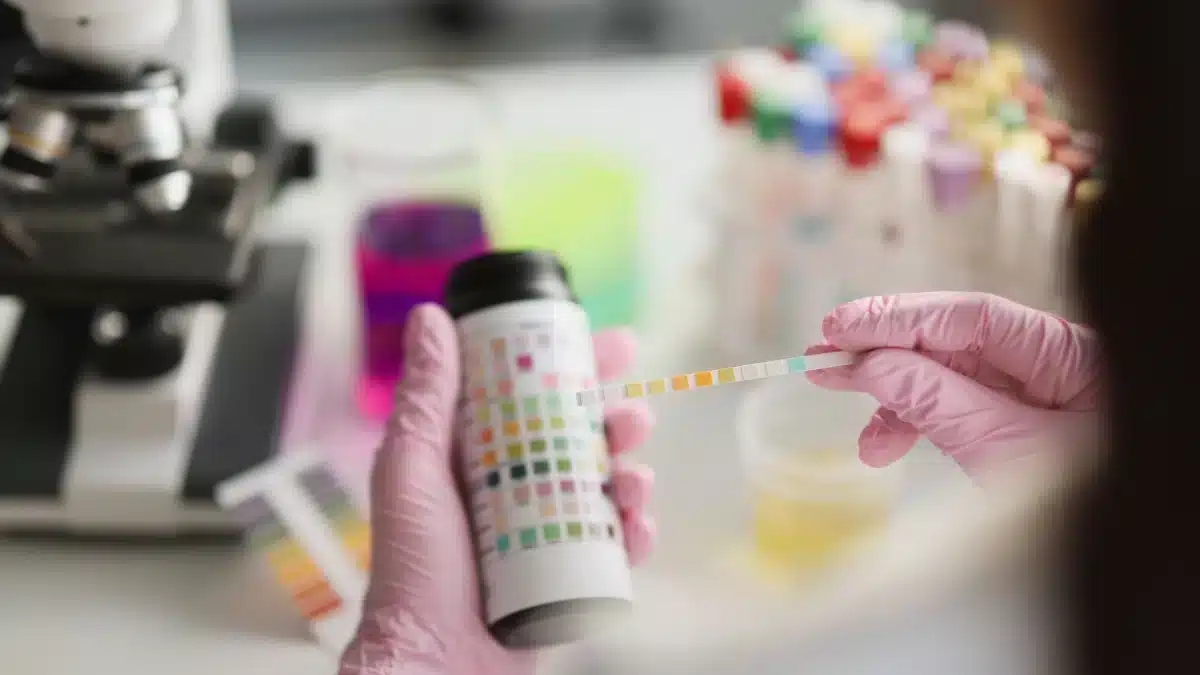Is a UTI Test the Same as an STD Test? Unraveling the Differences
Medical tests play a pivotal role in diagnosing and managing various health conditions.
When it comes to Urinary Tract Infections (UTIs) and Sexually Transmitted Diseases (STDs), accurate and timely testing is essential for proper treatment and prevention.
While both UTIs and STDs involve infections in the genital or urinary regions, they are distinct conditions caused by different pathogens.
Therefore, it is crucial to understand that a UTI test is not the same as an STD test, as the two serve different diagnostic purposes.
An overview: STD vs. UTI test
| Aspect | UTI test | STD test |
|---|---|---|
| Purpose | To detect and diagnose bacterial infections in the urinary system | To diagnose a range of infections (bacterial, viral, or parasitic) primarily transmitted through sexual contact |
| Testing methods | Urine culture, dipstick tests, and microscopic examination of urine | Blood tests, urine tests, swabs of genital or oral areas, and physical examinations. Specific tests depend on the suspected STD |
| Complications | If left untreated, UTIs can lead to kidney infections or other complications but are generally less severe than many STDs | STDs can lead to severe complications, including infertility and increased HIV transmission risk |
Differentiating between UTI tests and STD tests
Here is a description to understand the differences between UTI and STD tests:
UTI test

A UTI test involves the examination of a urine sample to detect the presence of bacteria or other indicators of infection within the urinary tract.
The primary diagnostic tool for UTIs is a urine culture, a laboratory procedure that cultivates bacteria from the urine sample to identify the specific causative agent.
Dipstick tests, which assess the presence of Nitrites and Leukocytes in the urine, are often used as initial screening tools for UTIs.
It is important to note that UTI tests do not typically identify sexually transmitted pathogens.
STD test

An STD test comprises various testing methodologies for different Sexually Transmitted Infections.
The selection of tests depends on the suspected infection and the patient’s history.
Various methods include the following:
- Blood tests
- Urine tests
- Swabs of genital or oral areas
- Physical examinations
Nucleic Acid Amplification Tests (NAATs) are frequently used for diagnosing bacterial STDs like Chlamydia and Gonorrhea.
While blood tests detect antibodies or antigens associated with infections like Syphilis and HIV.
Regular testing for STDs is recommended for sexually active individuals, as some infections may not display noticeable symptoms but can still lead to health complications and transmission.
The importance of differentiating between UTI and STD tests
Accurate and prompt diagnosis of both UTIs and STDs is critical for effective treatment and prevention.
Misdiagnosis or delayed diagnosis can result in unnecessary suffering and potential complications.
It is vital for healthcare providers and patients alike to differentiate between these tests to ensure that the appropriate diagnostic pathway is followed.
Raising awareness about these differences can empower individuals to seek timely medical attention, promoting their overall well-being.
Takeaway
Urinary Tract Infections (UTIs) and Sexually Transmitted Diseases (STDs) share some common symptoms, but they are distinct conditions caused by different pathogens.
A UTI test and an STD test serve separate diagnostic purposes.
UTI tests primarily identify bacterial infections within the urinary system through urine cultures and dipstick tests.
On the other hand, STD tests encompass a range of testing methods, such as blood tests, urine tests, swabs, and physical examinations, catering to various sexually transmitted infections.
Understanding these differences is vital for accurate diagnosis, timely treatment, and overall health, emphasizing the importance of informed medical decisions and awareness.
Frequently Asked Questions
Does a UTI test also test for STDs?
No, a UTI test does not typically test for STDs. UTI tests focus on detecting bacterial infections within the urinary system through urine cultures and dipstick tests. STD tests involve various methods, including blood tests, urine tests, and swabs, specifically targeting sexually transmitted infections.
Can UTI tests detect STDs?
No, UTI tests are not designed to detect STDs. They primarily identify bacterial infections within the urinary tract through urine cultures and dipstick tests. STDs require specific tests such as blood tests, urine tests, and swabs to diagnose sexually transmitted infections accurately.
Will STD show up in the UTI test?
No, STDs generally won’t show up in a standard UTI test. UTI tests focus on bacterial infections in the urinary system through urine cultures and dipstick tests. Specific STD tests, including blood tests, urine tests, and swabs, are necessary to accurately diagnose sexually transmitted infections, as they require different testing methods.
WowRx uses only high-quality sources while writing our articles. Please read our content information policy to know more about how we keep our content reliable and trustworthy.






